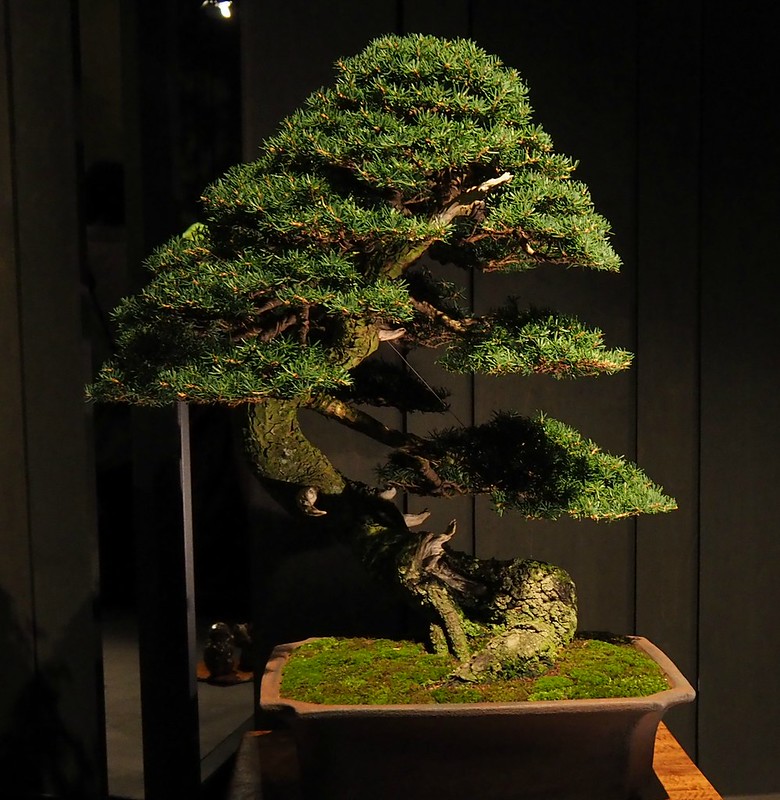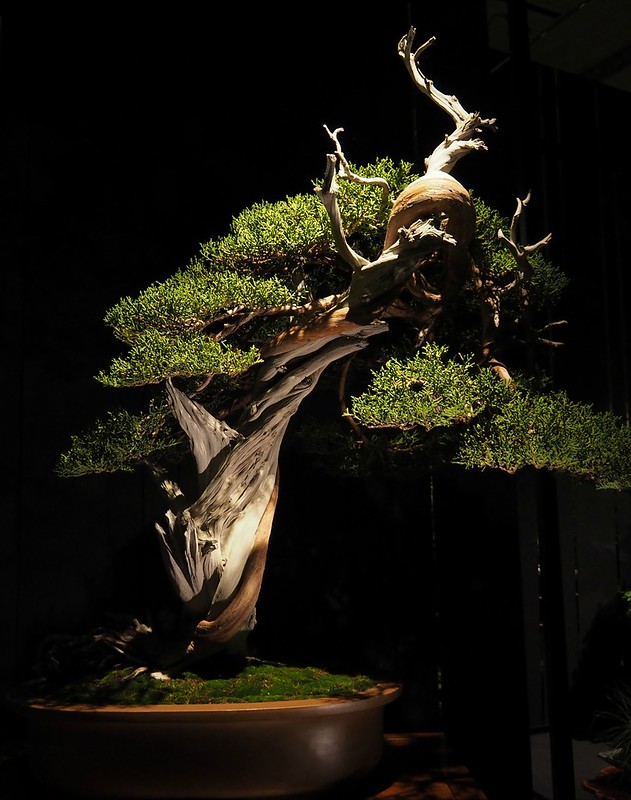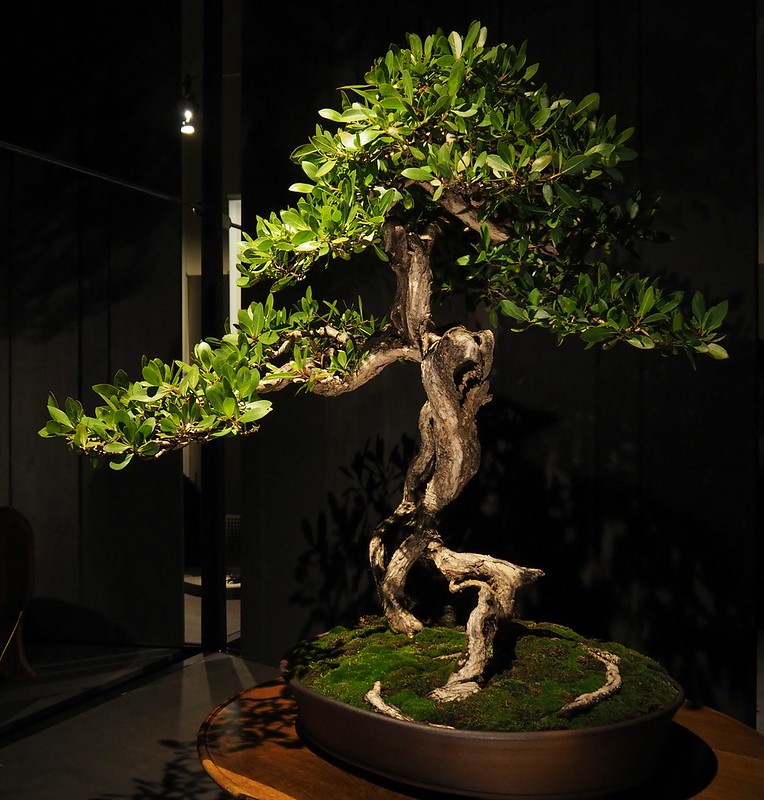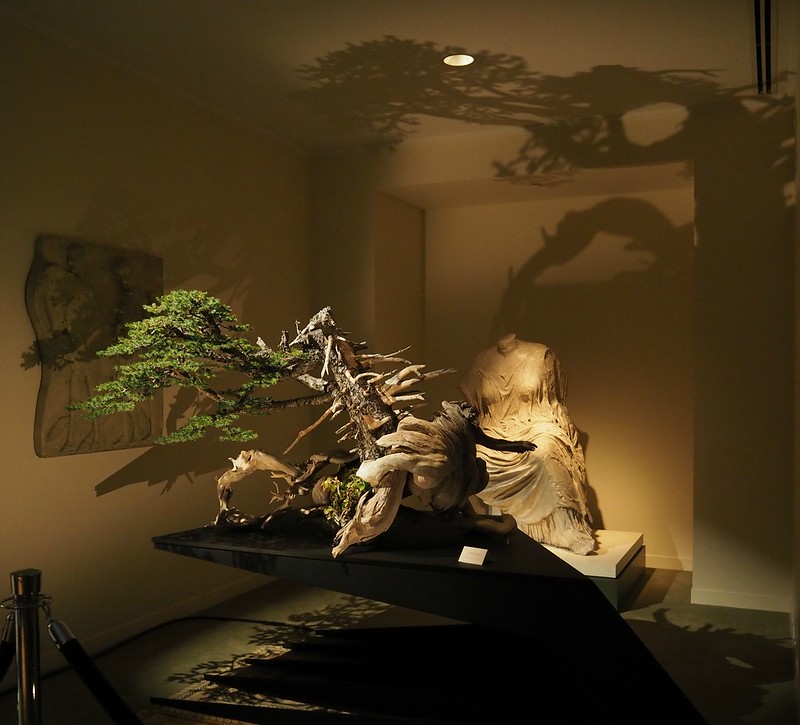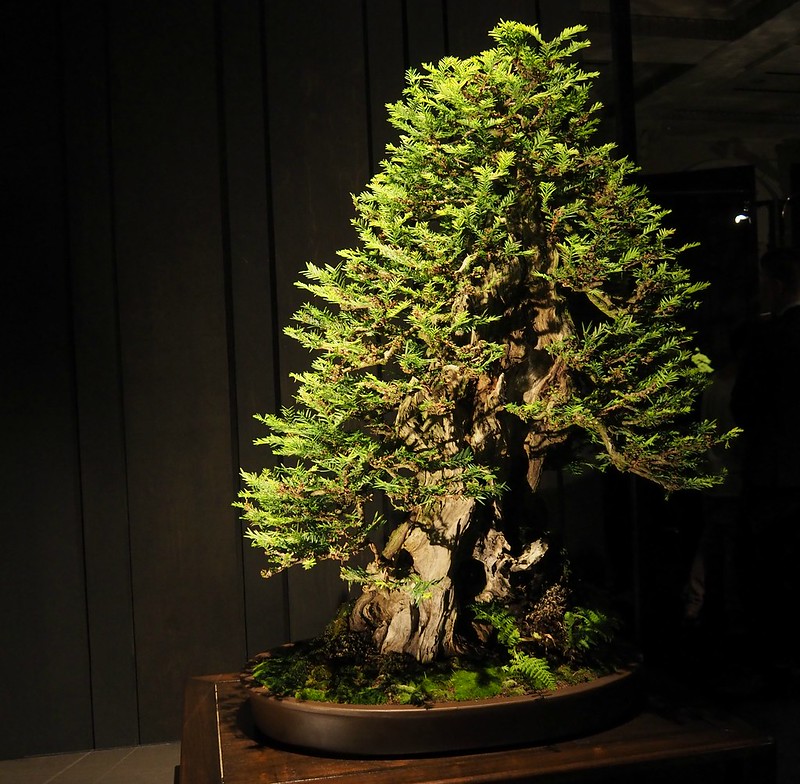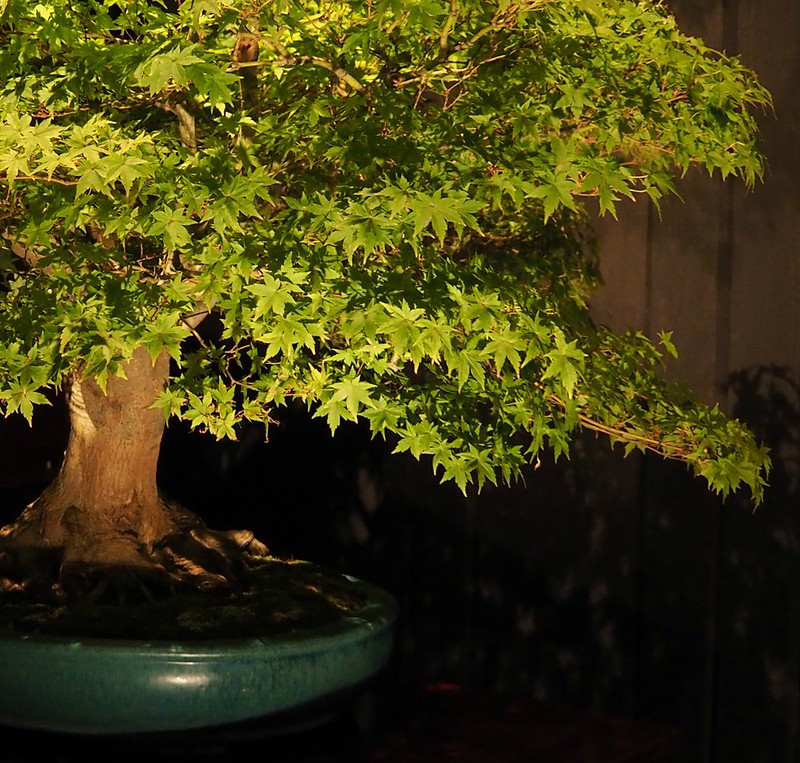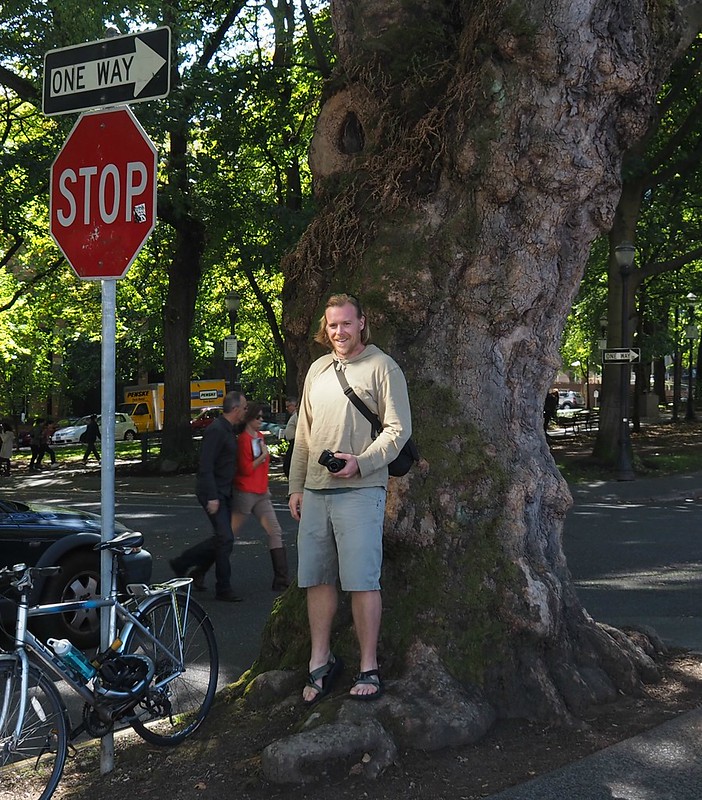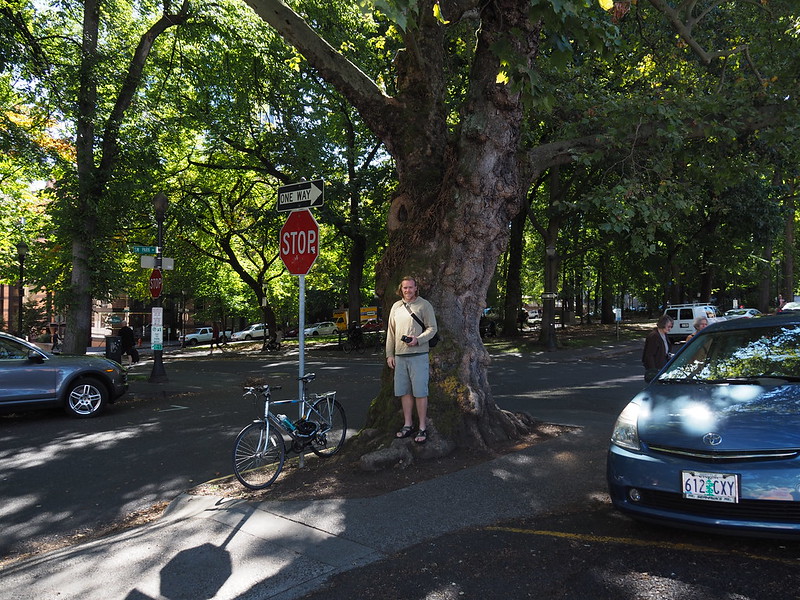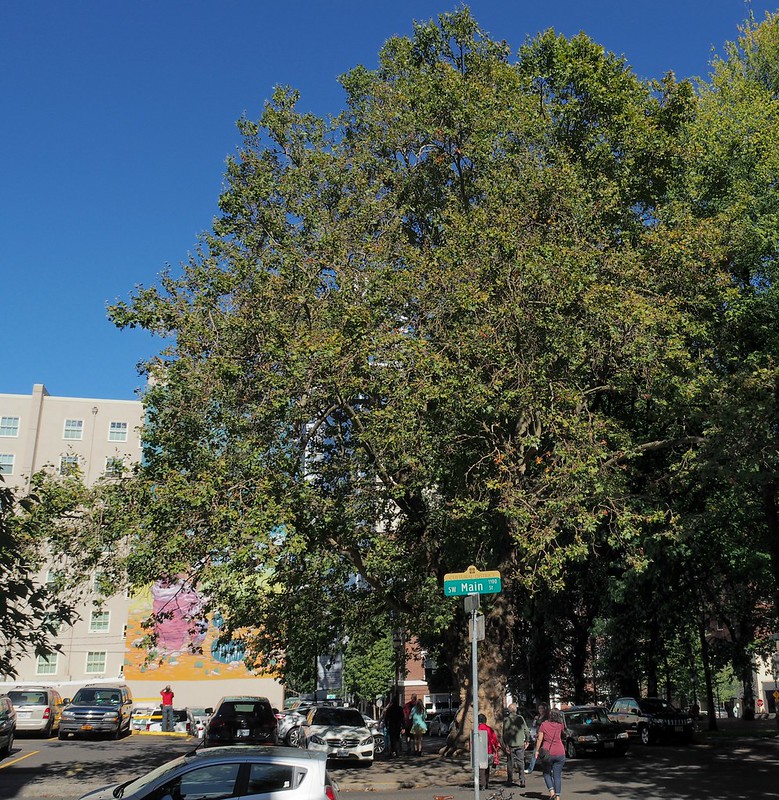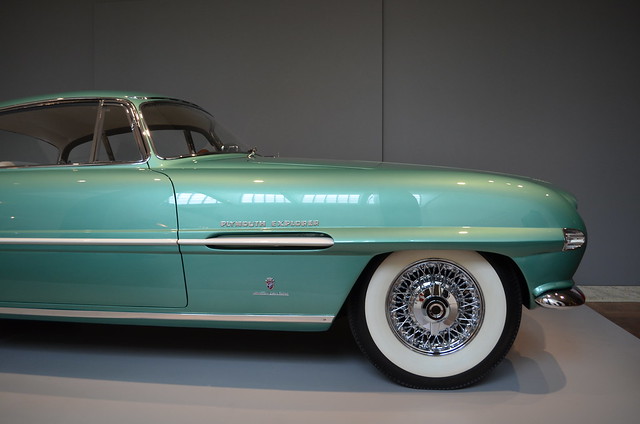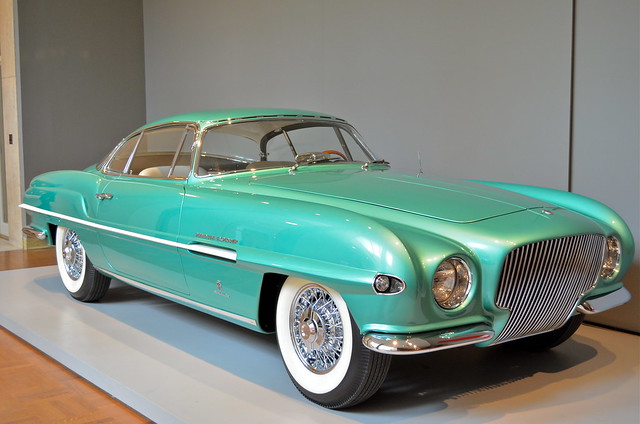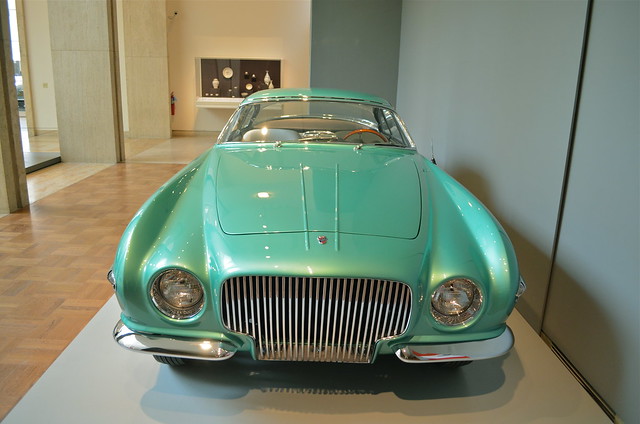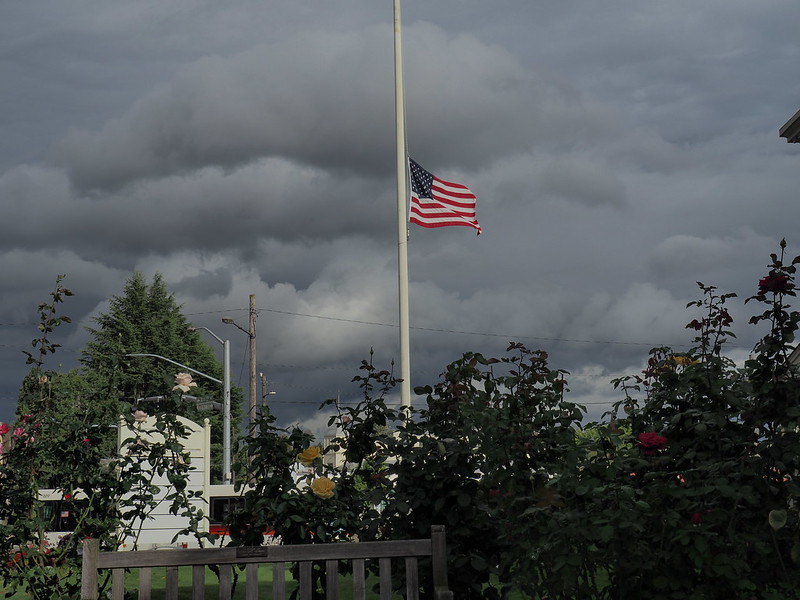
I took this photo today, mid-morning, when I went out for a walk. For me, the sky tells the tale of why this flag flys at half mast--the heaviness in a lot of folks hearts and minds after the murders at Umpqua Community College on October 1. I assume that's th case, that Albertina Kerr followed the President's call to lower the American flag to half mast; however, they've not returned it to the top of the flag pole yet--the order was half mast through October 6.
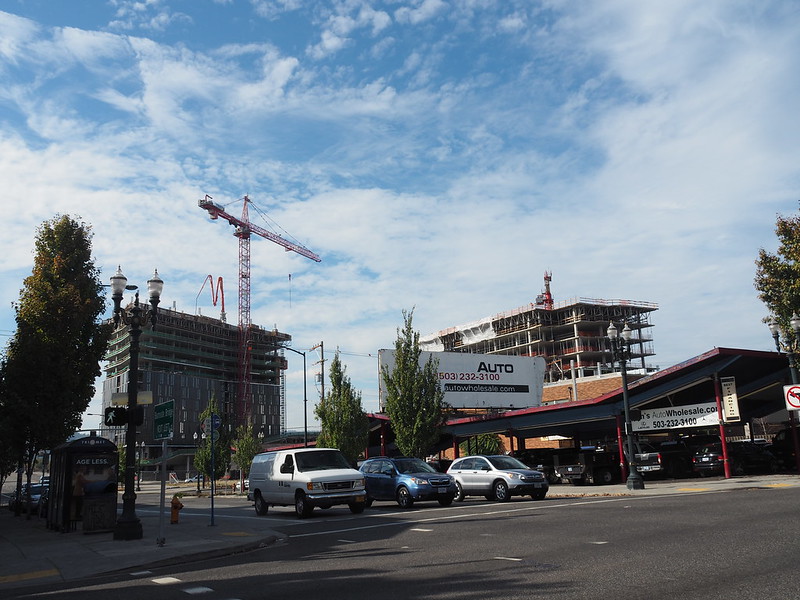
Portland has some fantastic blue skies, sometimes with clouds which magnify their impact. I took this photo on October 8, six minutes after I took the next one on today's post. I was on my way home after work. I waited at East Burnside and NE Grand for a 12 or a 19 bus. That building on the left will end up 21 stories, not all visible from this position since the ground floor of it rests below the height of the Burnside Bridge, and I'm at that height here on East Burnside. The one on the right tops out at 10 stories. Both of those heights are what I found online in early stories about the construction--I assume there have been no changes.
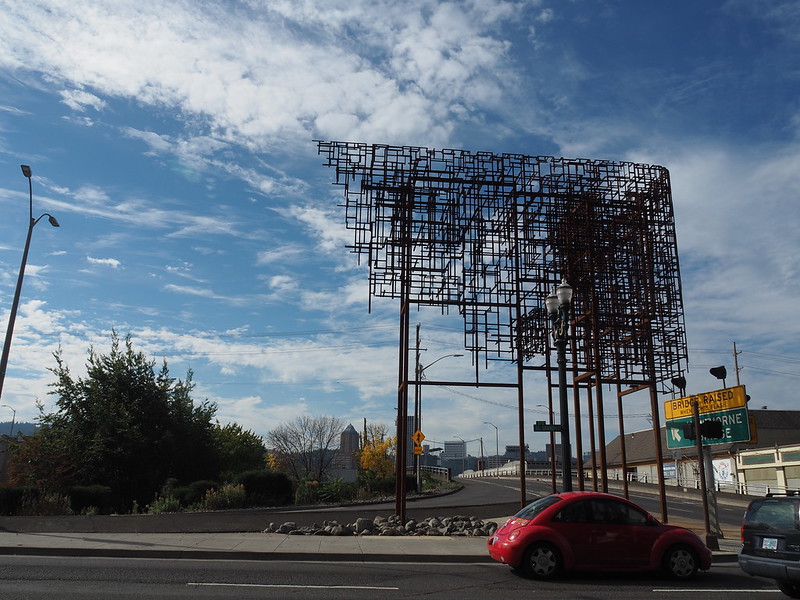
Thirteen blocks south of the previous photo, same day, 2:34 p.m. I took this one as I sat at the Portland Streetcar shelter, waiting. I like the juxtaposition of the rust-induced-chocolate-truffle-colored public art with the blue sky. The sculpture's title is Inversion Plus Minus.
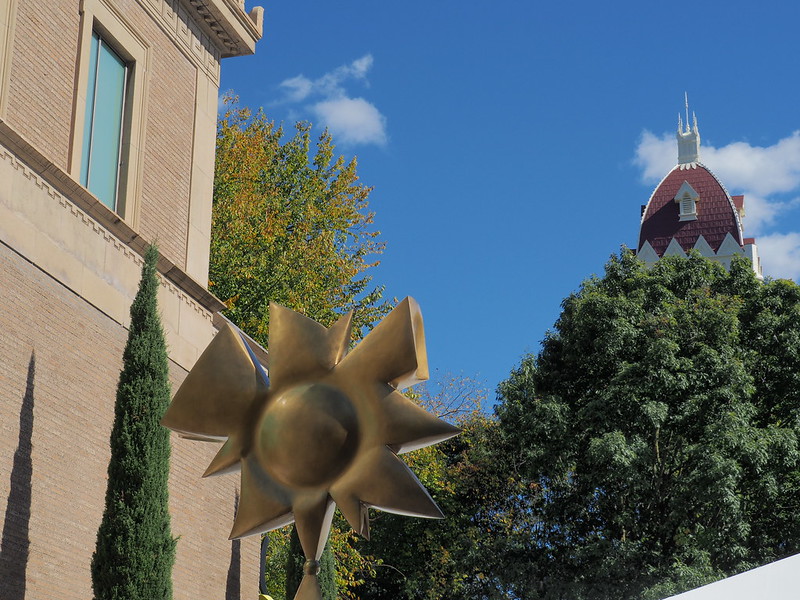
Downtown, outside the Portland Art Museum, September 26, when Leland and I had been inside at The Artisans Cup American Bonsai exhibition. I'm sorry to report that I don't know the name of this sculpture; it's in the outdoor courtyard between the two buildings that make up the PAM. The 175-foot tall church bell tower peeking between the trees and the cloud is across the South Park Blocks; it's the First Congregational United Church of Christ and is amazing in its architecture and Povey Brothers Studio stained glass windows.
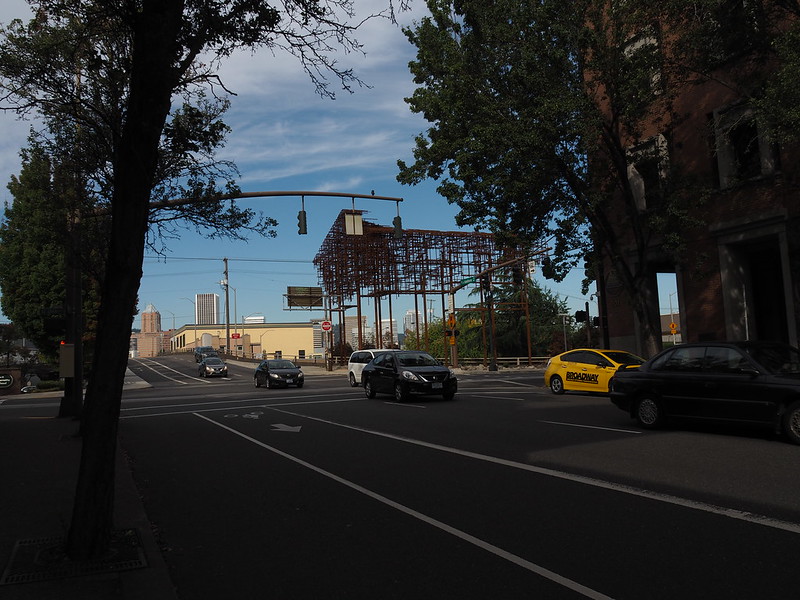
One last photo of Portland skies, this one taken as I arrived at work on September 22. More of Inversion Plus Minus, the public art which also appears at the opposite end of the block and is shown in an earlier photo in today's post.

